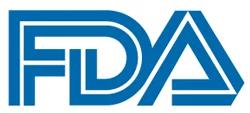Article
FDA Grants Priority Review to Narsoplimab for HSCT-TMA
Author(s):
January 19, 2021 — The FDA has granted priority review to the biologics license application for narsoplimab for the treatment of hematopoietic stem cell transplant-associated thrombotic microangiopathy.

The FDA has granted priority review to the biologics license application (BLA) for narsoplimab (OMS721) for the treatment of hematopoietic stem cell transplant-associated thrombotic microangiopathy (HSCT-TMA), according to an announcement from Omeros Corporation.1
Under the Prescription Drug User Fee Act, the regulatory agency must make a decision on the BLA by July 17, 2021. Notably, the FDA does not plan to hold an advisory committee meeting to discuss the application, according to the agency’s filing letter.
“The filing of our BLA by the FDA marks an important milestone on the path to commercialization of narsoplimab,” Gregory A. Demopulos, MD, chairman and chief executive officer of Omeros, stated in a press release. “There is no FDA-approved product for the treatment of transplant-associated TMA, a frequently fatal complication of stem cell transplantation. We appreciate FDA’s collaborative approach throughout the development of our breakthrough therapy-designated product narsoplimab, and we are committed to working closely with the FDA review team to make the drug available to patients who need it.”
The investigational, fully human IgG4 monoclonal antibody was designed to bind to mannan-binding lectin-associated serine protease-2 (MASP-2).2 The lectin pathway is mostly activated by either tissue damage or microbial infection. Notably, unlike other complement inhibitors, narsoplimab has not been found to interfere with the classical complement pathway, which plays a key role with regard to acquired immune response to infection. The investigational antibody was developed to prevent complement-mediated inflammation and endothelial damage without affecting other innate immunity pathways.
Narsoplimab was found to induce complete responses (CRs), lead to improved laboratory markers, and promising 100-day survival rates in patient with HSCT-TMA, according to data from a phase 2 trial (NCT02222545) that were presented during the 2020 European Hematology Association Congress.3
Specifically, the CR rate achieved with narsoplimab was 54% (95% CI, 34%-72%) in the total population of patients examined (n = 28). Twenty-three patients who were treated per study protocol, who had received 4 weeks or more of dosing, the ORR was even higher, at 65% (95% CI, 43%-84%).
To be eligible for enrollment on the phase 2 trial, patients had to be 18 years of age at the time of screening and have had persistent HSCT-TMA. Participants who previously received eculizumab (Soliris) within 3 months before screening, had a positive direct Coombs test, or active systemic bacterial or fungal infection that called for antimicrobial therapy, were excluded from the analysis.
The primary end points of the research included improvement in TMA laboratory markers of platelet count and serum lactate dehydrogenase (LDH) levels, improvement in clinical status, as well as safety and tolerability. Key secondary end points were comprised of survival and change from baseline with regard to laboratory markers.
At baseline, patients had a mean age of 48 years and the majority (71%) were male. Ninety-six percent of participants had malignant underlying disease and had undergone transplant because of that; 64% of these patients had risk factors such as graft-versus-host disease, 75% had significant infection, 14% had noninfectious pulmonary complications, and half had neurological signs. Because 93% of patients had multiple risk factors for poor outcomes, the overall population was determined to be high risk.
Additional data from the trial revealed during the meeting demonstrated that narsoplimab also rapidly increased platelet counts in the majority of participants; counts reached a threshold of more than 20,000 per uL. Moreover, transfusion independence was defined at about 30,000 per uL (P = .001).
The majority of patients who received narsoplimab also reported a downward trend in LDH level (P = .008). Following treatment with the antibody, most patients also experienced an improvement in haptoglobin change from baseline (P <.001).
Moreover, the 100-day survival rate following HSCT-TMA diagnosis was 68% in all patients who received treatment with narsoplimab; in patients treated per study protocol, this rate was 83%. The 100-day survival rate was highest in 15 patients who were identified to be responders to treatment, at 93%.
With regard to safety, the most frequently reported toxicities with narsoplimab included nausea (25%), vomiting (32.1%), diarrhea (28.6%), hypokalemia (25%), neutropenia (25%), and pyrexia (25%). These adverse effects proved to be similar to what is normally seen in patients who have previously undergone transplantation. Twenty-one percent of participants died on the trial because causes associated with transplant.
These data led to the initiation of the rolling BLA for the agent in patients with HSCT-TMA. Previously, the FDA granted narsoplimab a breakthrough therapy designation for the treatment of patients with high-risk TA-TMA; the agent has also been granted an orphan drug designation for use in patients with TA-TMA and complement-mediated TMA prevention.
Narsoplimab is also under investigation in several phase 3 trials that are examining its use in other lectin pathway–associated diseases, including IgA nephropathy (NCT03608033).
References
- Biologics license application for narsoplimab in HSCT-TMA accepted for priority review by US FDA. News release. Omeros Corporation. January 19, 2021. Accessed January 19, 2021. http://bit.ly/2NncWTb.
- Our pipeline. Omeros Corporation. Accessed January 19, 2021. http://bit.ly/2KsyY5C.
- Rambaldi A. Smith M, Whitaker S, et al. Narsoplimab (OMS721) for the treatment of adult hematopoietic stem cell transplant-associated thrombotic microangiopathy. Presented at: 2020 European Hematology Association Congress; June 11-21, 2020; Virtual. Abstract S262.









